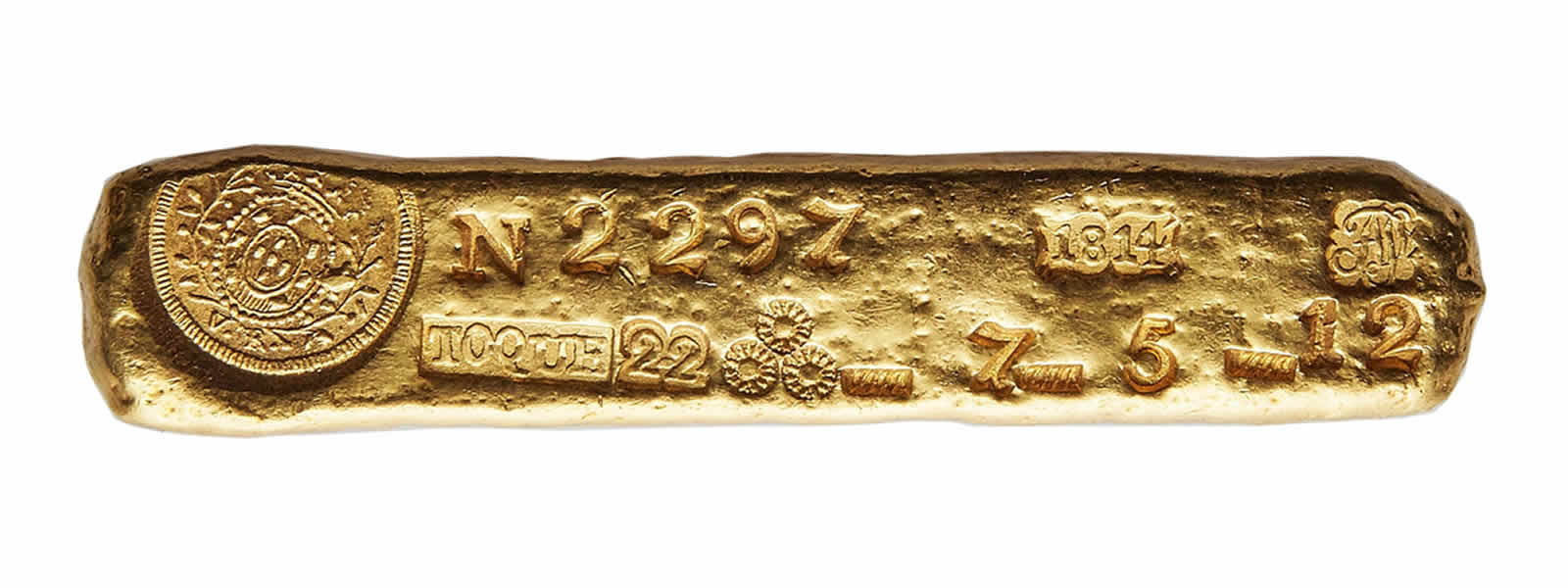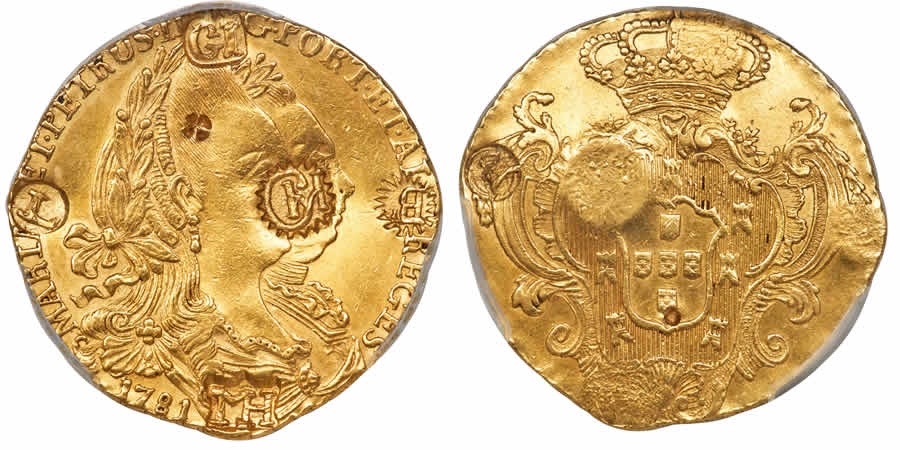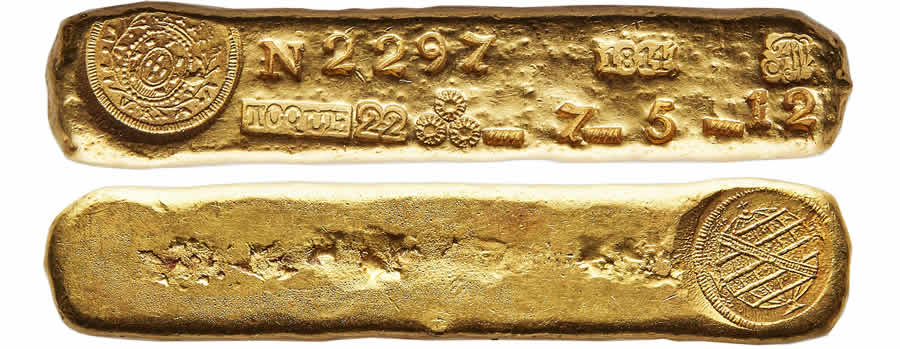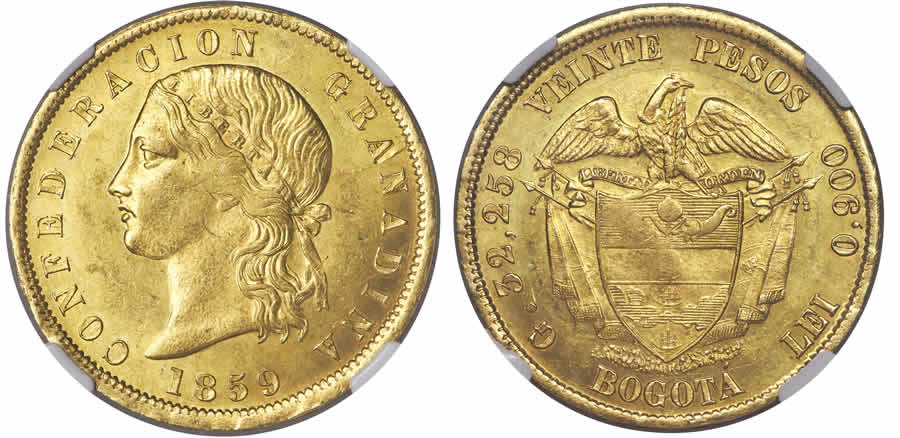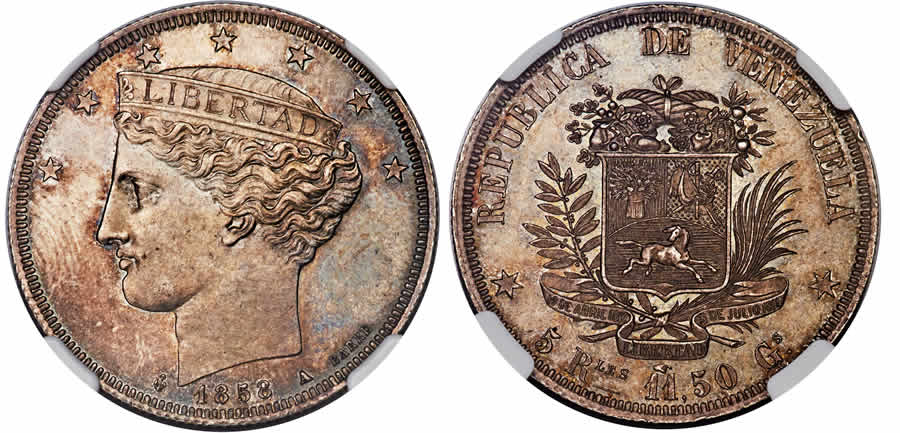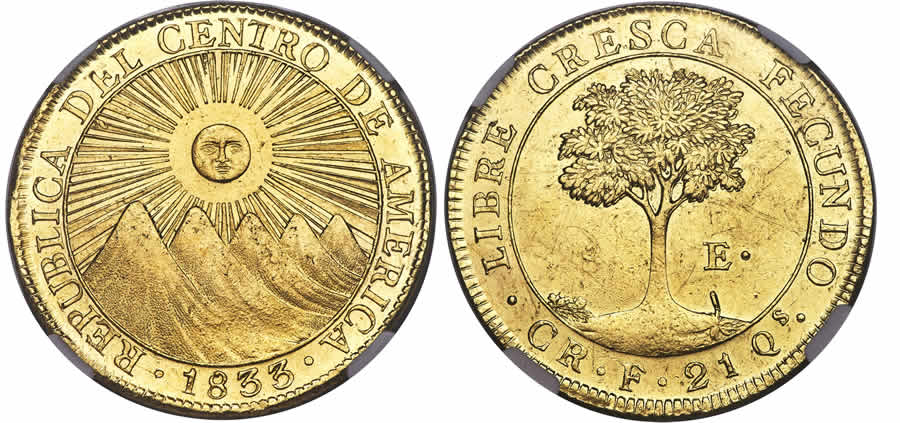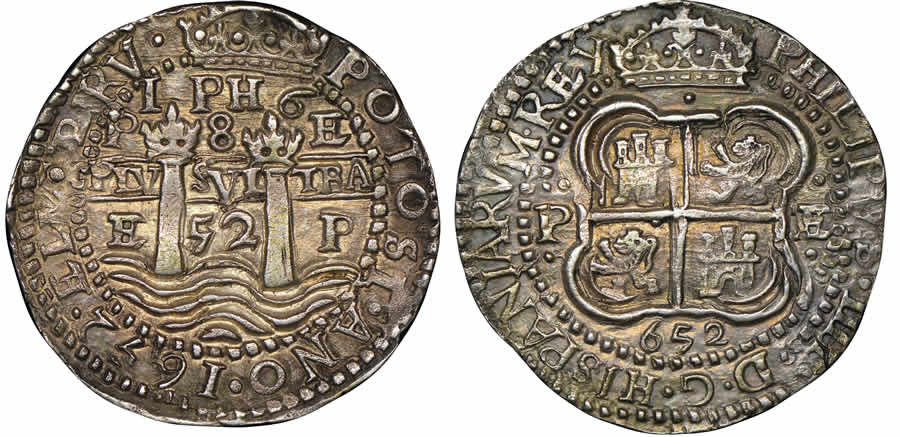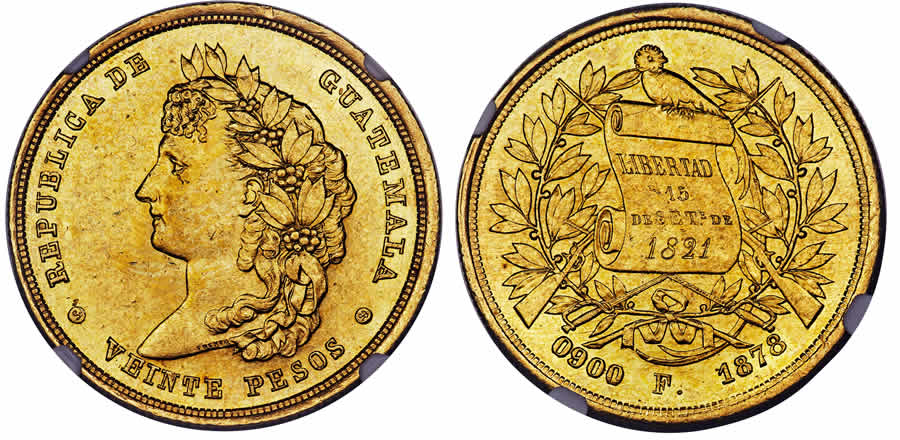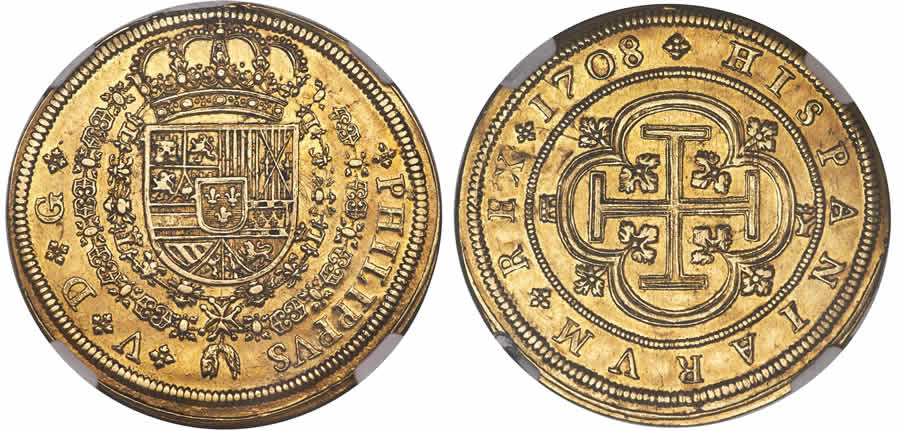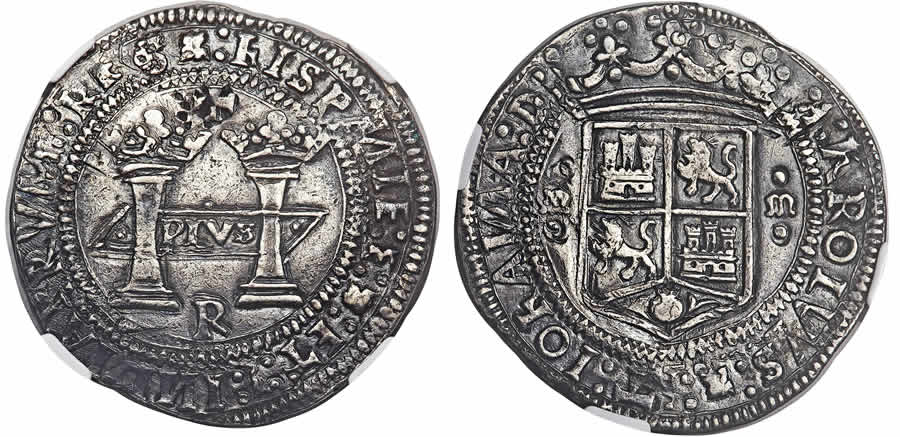THESE 10 INCREDIBLE COINS SHOWCASE THE AMAZING RANGE OF STYLES AND DENOMINATIONS IN POPULAR CATEGORY OF NUMISMATICS
By Zach Beasley
Latin American coins give collectors the chance to hold in their hands artifacts that represent the expansion, migration and evolution of European cultures in the New World. The discovery of gold and silver in Central and South America brought about mints that created excellent monetary works of art featuring local motifs.
EVENT
►WORLD & ANCIENT COINS PLATINUM NIGHT AUCTION 3091
May 6-7, 2021
Online: HA.com/3091a
►SPECIAL COLLECTION OF ANCIENT COINS, PART II, ONLINE AUCTION 61210
May 16, 2021
Online: HA.com/61210a
INQUIRIES
Cristiano Bierrenbach
214.409.1661
CrisB@HA.com
The following are 10 incredible examples Heritage Auctions has sold over the past three years, chosen to showcase the amazing range of styles and denominations this immensely popular category of numismatics provides.
CURACAO, BRITISH OCCUPATION, GOLD COUNTERSTAMPED 6 PESOS, circa 1815
This magnificent revalued example displays five different stamps and one cross-shaped test punch on the obverse, together with one stamp and a test punch on the reverse, all on a genuine clipped Maria I & Pedro III gold 6400 Reis 1781 from Brazil. One of the rarest and most significant West Indies countermarked issues, and reportedly one of just two traced examples of this type bearing six countermarks rather than five by both the Pridmore and Gordon reference guides. According to Pridmore, who mistakenly placed the issue under c. 1799 and the order of Governor J.K. Lauffer, these Brazilian gold pieces were counterstamped in order to distinguish them from clipped, debased and light-weight plugged 6400 Reis, a program which likely took place c. 1814 following a general increase in the value of the dollar of the British Windward Islands and an order to supply for a shortage of small change under Governor John Hodgson. The only specimen of this type Heritage Auctions has ever offered, this fascinating rarity brought $144,000 in August 2020.
BRAZIL, JOÃO PRINCE REGENT, GOLD INGOT OF VILA RICA, 1814
Kurt Prober’s massive research on Brazilian gold ingots produced in the nine foundries includes 43 specimens produced at Vila Rica. The vast majority of these ingots range from 20 to 50 grams in weight with four specimens over 100 grams. This ingot, at 217.90 gm, is the heaviest of all Vila Rica ingots by nearly 80 grams. For a period in the colonial history of Brazil, in addition to coins, gold ingots and bars circulated as legal tender. Legislation was passed to control the circulation of powder gold and to tax it at regional foundries that were initially established in the 1770s. As the ingots were produced, they received marks that would identify the foundry, year, sequential production number, the assayer’s monogram, the fineness of the gold and the weight. This beautiful ingot, the second most valuable Brazilian lot Heritage has ever sold, realized $264,000 in January 2018.
COLOMBIA, GRANADINE CONFEDERATION, GOLD 20 PESOS, 1859-BOGOTA
Certified by NGC as MS63, this is the single highest graded example of this majestic Colombian rarity by PCGS or NGC. According to numismatic researcher Jorge Emilio Restrepo, just eight examples of this first-year type are known. This lovely specimen sold for $22,800 in January 2020.
VENEZUELA, REPUBLIC 5 REALES, 1858-A
Struck at the Paris mint, this simply stunning MS64 example of this rare and highly popular type currently holds the title as the single finest graded example seen by either NGC or PCGS. The previous Mint State example to cross the auction block was in 2014 as part of the Lissner Collection, where an MS62 certified offering hammered at $18,000. This superior specimen brought $23,400 in August 2020.
COSTA RICA, CENTRAL AMERICAN REPUBLIC, GOLD 8 ESCUDOS, 1833 CR-F
A true treasure of the Latin American series, offering the iconic radiant sun, mountain and Ceiba tree motifs in their full Mint State glory, gold issues of the now-defunct Central American Republic (which consisted of the present-day countries of Costa Rica, El Salvador, Guatemala, Honduras, Nicaragua and the southern Mexican state of Chiapas) remain widely recognized and sought-after by collectors for their combined rarity and visual allure. This NGC certified MS61 example realized $33,600 in January 2020.
ARGENTINA, RIO DE LA PLATA GOLD 8 ESCUDOS,
1832/1 RA-P
The “Sun Face” motif on Latin American coinage is immensely popular with collectors and this issue is no exception. Along with the immediately recognizable features from the Argentinian flag and coat of arms, the reverse has an interesting overdate. The Jansen reference guide theorizes that there was only one reverse die for this issue, and it features a small protrusion above and around the “2,” meaning the die from 1831 was re-worked for 1832. This lovely specimen sold for $43,200 in January 2020.
BOLIVIA, PHILIP IV ‘ROYAL’ 8 REALES, 1652 P-E
An exceptional example of the rare and popular Galano cob issues of Potosi, and at MS63, in all probability the finest example of the denomination for the numismatically significant “transitional” series period. “Royal” 8 Reales were minted from carefully engraved dies on specially prepared flans. However, the original purpose of these iconic works of art is unclear. This ex-Millenia Collection example brought $42,300 in January 2017.
GUATEMALA, REPUBLIC GOLD 20 PESOS, 1878-F
The “F” on this series is for Johann Baptist Frener, the Guatemala Mint’s director and main engraver at the time. Of Swiss origin, Frener was instated as the main engraver of the Guatemala Mint by strongman Rafael Carrera, and began to show his talent starting in 1859. His beautiful rendition of the Guatemalan coat of arms depicting the Quetzal bird on the reverse was used in most of that nation’s coinage starting in 1872, and the design is still seen on coinage today. This NGC certified MS62 specimen realized $40,800 in January 2019.
SPAIN, PHILIP V GOLD 8 ESCUDOS, 1708 (AQUEDUCT)-Y
Of the utmost rarity, this incredible Segovian 8 Escudos is from the first year of production for the series. Struck only in 1708 and 1717, before the established issue began in 1721, these initial types are considered trials by some and, when examining the fantastic die arrangement and quality of this specimen, this is not difficult to believe. The fact that this very coin is the plate in so many references (KM277; Cal-150; Onza-453; Chaves-695) should serve as testament to its beauty, and without a doubt few can represent the type so finely as this. This marvelous piece brought $114,000 in January 2020.
MEXICO, CHARLES AND JOHANNA ‘EARLY SERIES’ RINCÓN 8 REALES, circa 1538
Once considered to be a purely conjectural piece, this earliest of crown-sized coins struck in the New World – just two years after the establishment of the mint (later Mexico City) by royal charter in 1536 – represents a minuscule group of just three known pieces recovered from the shipwreck of the Golden Fleece (sunk c. 1550) in 1990, and sold at public auction in 2004, 2006 and 2014, respectively. Aside from the unabashed illiteracy of the legends (a sign that these early pieces were produced by native, New World mint workers), this issue bears several other key clues to its early production, including the older, Gothic style of numerous letters in the legends, most particularly the M mintmarks on either side of the crowned royal shield of Spain, while the remainder of the orthography conforms to “new” Latin lettering. From a more world-historical perspective, while this initial experiment aimed at a colonial crown-sized silver coinage initially failed, such experimentation conformed with and reflected Spain’s newfound wealth and domineering aspirations at the dawn of the 16th century. Perhaps planned as the potential backbone of a nascent colonial empire, this issue proudly asserts Spain’s central position in the world political order, conveying via the motto between the Pillars of Hercules – the old border of the known world – PLVS (“beyond,” in direct defiance of the ancient motto Ne Plus Ultra, nothing further beyond) that the new superpower was no longer to sit idly on the edge of global affairs. This legendary first “Dollar” of the Americas realized $528,000 in August 2018.
 ZACH BEASLEY, senior numismatist in the World & Ancient Coins department at Heritage Auctions, has written for Celator magazine, for which he won a Numismatic Literary Guild award.
ZACH BEASLEY, senior numismatist in the World & Ancient Coins department at Heritage Auctions, has written for Celator magazine, for which he won a Numismatic Literary Guild award.
This article appears in the Spring 2021 edition of The Intelligent Collector magazine.

